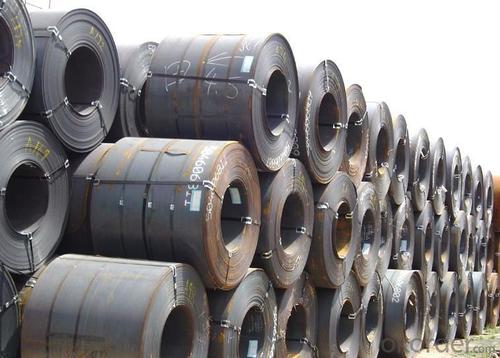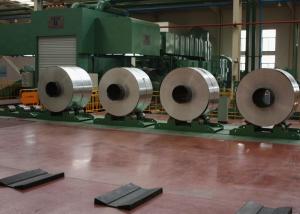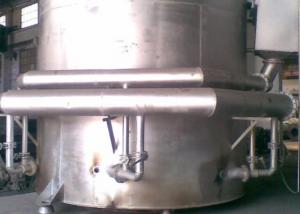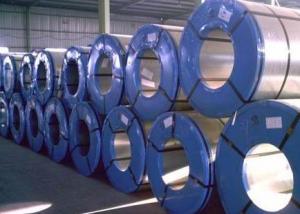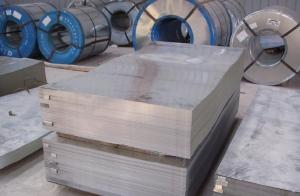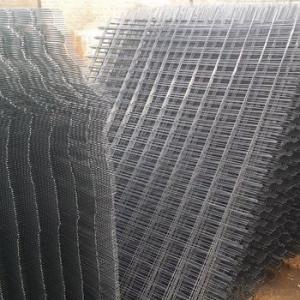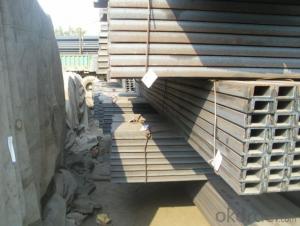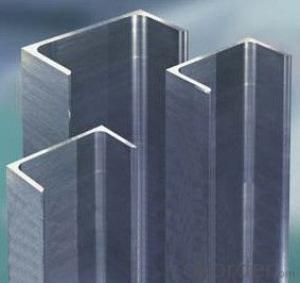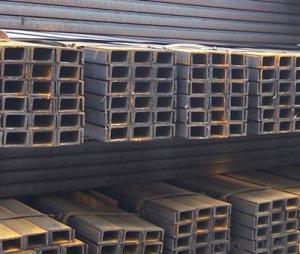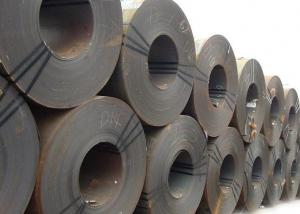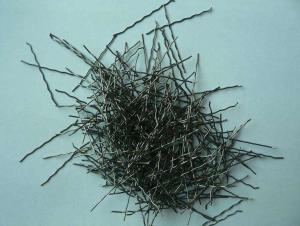Hot Rolled Alloy Channel Steel GB Standard
- Loading Port:
- China Main Port
- Payment Terms:
- TT or L/C
- Min Order Qty:
- 50 tons m.t.
- Supply Capability:
- 50000 Metric Tons Per Month m.t./month
OKorder Service Pledge
OKorder Financial Service
You Might Also Like
Specification Of Hot Rolled Alloy Channel Steel GB Standard
|
|
Thickness |
Width |
Length |
Coil Inside Diameter |
|
HOT ROLLED STEEL COIL |
1.50~25.0mm |
600~2000mm |
|
762mm |
|
HOT ROLLED STEEL STRIP |
1.50~20.0mm |
30~720mm |
|
762mm |
|
HOT ROLLED STEEL PLATE |
6.00~700mm |
500~4500mm |
4000~18000mm |
|
|
HOT ROLLED STEEL SHEET |
1.20~25.0mm |
50~2000mm |
0~18000mm |
|
|
HOT ROLLED STEEL CHEQUERED |
1.40~10.0mm |
900~1500mm |
0~18000mm |
|
Standard &Grade Of Hot Rolled Alloy Channel Steel GB Standard
|
|
JIS |
ASTM |
SAE |
EN |
|
Commercial Quality |
G3131 SPHC |
A569 A635 A659 A1011 CS Type A, B, C |
1006~1025 |
10111 DD11 |
|
Drawing Quality |
G3131 SPHD |
|
1006~1010 |
10111 DD12 |
|
Deep Drawing Quality |
G3131 SPHE |
A622 A1011 DS Type A, B |
1006~1010 |
10111 DD13 DD14 |
|
General Structure (T.S.<490N/mm2) |
G3101 SS330 SS400 G3106 SM400A G3132 SPHT1 SPHT2 SPHT3 |
A36 A283 GR.C A570 GR.30~40 A1001 SS GR.30~40 |
1010~1025 |
|
|
General Structure (T.S.≥490N/mm2) |
G3101 SS490 G3106 SM490A SM490YA G3132 SPH4 |
A570 GR.45~50 A607 GR.45~70 A1011 SS GR.45,50 A1011 HSLAS GR.45~70 |
J1392 050X |
|
Definition Of Hot Rolled Alloy Channel Steel GB Standard
Rolled to its final dimensions while it’s hot enough to scale, our hot-rolled steel is an amalgamation of the various qualities of steel. It can be in the form of plates, sheets and coils. Our Hot-Rolled Steel Sheets and Coils are applied to a wide range of uses such as automobile, electrical appliance, machinery manufacturing, container manufacturing, shipbuilding, bridge, pipeline, and receive high acclaim from our customers for its excellent quality.


Usage/Application Of Hot Rolled Alloy Channel Steel GB Standard
As raw material for:
Container &Pipe Production
Carbon Structural Steel
Low Alloy Steel
High Quality Carbon Structural Steel
Atmospheric Corrosion Resistant Steel
Low Carbon Steel (Commercial Quality, Drawing Quality, Deep Drawing Quality)
Packaging & Delivery Of Hot Rolled Alloy Channel Steel GB Standard
The packing of coils consists of anti-damp paper, PVC film, hardboard paper, steel box, strapped with steel strips, fitted with locks and edge protectors and guarantees the optimal condition of the delivered goods. Each coil can be additionally fitted with wooden/steel skids(eye to the side) or wooden pallets(eye to the sky).
Bulk shipment packed with steel belt.

- Q: What are the properties of stainless steel for medical applications?
- Stainless steel used in medical applications is known for its exceptional properties such as corrosion resistance, high strength, durability, and biocompatibility. These properties make it an ideal material for surgical instruments, implants, and medical devices. Additionally, stainless steel can be easily sterilized, has good formability, and allows for precise manufacturing, making it a reliable choice in the medical field.
- Q: How is steel used in the production of HVAC systems and equipment?
- Steel is used in the production of HVAC systems and equipment due to its strength, durability, and heat resistance properties. It is used in the construction of air ducts, pipes, and various components of the system, ensuring structural integrity and long-lasting performance. Steel is also commonly used for heat exchangers, condenser coils, and fan blades, as it can withstand high temperatures and provide efficient heat transfer.
- Q: How do steel products contribute to the transportation and logistics sector?
- Steel products contribute to the transportation and logistics sector in multiple ways. Firstly, steel is used extensively in the manufacturing of vehicles, including cars, trucks, trains, and ships. Its high strength-to-weight ratio and durability make it an ideal material for constructing vehicle bodies, chassis, and components, ensuring safety and reliability in transportation. Moreover, steel is crucial in the construction of infrastructure necessary for transportation and logistics, such as bridges, tunnels, railway tracks, and port facilities. These structures require the strength and resilience of steel to handle heavy loads, withstand harsh environmental conditions, and provide efficient and safe transport routes. Additionally, steel plays a significant role in the production of shipping containers, which are essential for the movement and storage of goods globally. These containers are made from steel to withstand stacking, handling, and transportation while protecting the goods inside. Steel's strength and corrosion resistance make it an ideal material for these purposes. Overall, the use of steel products in the transportation and logistics sector ensures the efficiency, reliability, and safety of various modes of transportation, infrastructure, and storage, contributing to the smooth functioning of global supply chains and facilitating economic growth.
- Q: How is steel used in the production of textile machinery?
- Steel is used in the production of textile machinery for its strength and durability, as it provides a sturdy framework for the machines. It is used to construct various components and parts of the machinery such as the frame, gears, and shafts, ensuring the machines can withstand the high pressures and strains associated with textile production.
- Q: How is steel used in the automotive industry?
- Steel is widely used in the automotive industry for its strength, durability, and cost-effectiveness. It is used in the construction of vehicle frames, body panels, and structural components, ensuring the safety and stability of vehicles. Additionally, steel is also used in the production of engine parts, suspension systems, and braking systems, contributing to overall performance and reliability.
- Q: How is steel used in the construction of convention centers and exhibition halls?
- Steel is commonly used in the construction of convention centers and exhibition halls due to its strength and versatility. It is used to create the structural framework and support systems, including columns, beams, and trusses. Steel's high strength-to-weight ratio allows for spacious, open interiors without the need for excessive supporting columns. Additionally, its durability and resistance to fire and corrosion make it an ideal choice for these large-scale structures, ensuring long-term stability and safety.
- Q: What are the different types of steel chains and their uses in agricultural machinery?
- There are several types of steel chains commonly used in agricultural machinery. These include roller chains, leaf chains, and agricultural chains. Roller chains are the most widely used and are commonly found in tractors, combines, and other farming equipment. They are used to transmit power from the engine to various components, such as wheels, blades, or conveyors. Leaf chains are often used in heavy-duty applications, such as in balers or harvesters, where they provide reliable lifting and pulling capabilities. Agricultural chains, on the other hand, are designed specifically for agricultural machinery and are used for tasks like crop harvesting, sowing, or irrigation. These chains are usually resistant to corrosion and wear, making them suitable for outdoor and demanding conditions.
- Q: How do steel products contribute to the retail and commercial sector?
- Steel products contribute to the retail and commercial sector by providing durable and versatile materials for construction, manufacturing, and display purposes. From steel shelving units and storage racks to shop fittings and display stands, these products offer strength, stability, and longevity, ensuring the efficient organization and presentation of merchandise in retail stores. Additionally, steel is commonly used in commercial buildings, such as malls and office complexes, for its structural integrity, fire resistance, and aesthetic appeal. Overall, steel products are essential in enhancing the functionality, safety, and visual appeal of retail and commercial spaces.
- Q: How are steel profiles used in architectural design?
- Steel profiles are commonly used in architectural design for their strength, versatility, and aesthetic appeal. They are often employed as structural elements, such as beams and columns, to support the weight of a building and provide stability. Steel profiles also allow for the creation of unique and intricate designs, enabling architects to achieve their desired aesthetic while maintaining structural integrity. Additionally, steel profiles are frequently used in the construction of facades, curtain walls, and other architectural features, offering durability, flexibility, and an array of design possibilities.
- Q: How is steel used in the construction of railway bridges and tracks?
- Steel is widely used in the construction of railway bridges and tracks due to its strength, durability, and ability to withstand heavy loads. It is used to fabricate beams, girders, and columns for bridge structures, providing the necessary support and stability. Steel is also used for track components such as rails, sleepers, and fasteners, ensuring a smooth and reliable passage for trains. Overall, steel plays a crucial role in enhancing the safety, efficiency, and longevity of railway infrastructure.
1. Manufacturer Overview
| Location | Hebei, China |
| Year Established | 2002 |
| Annual Output Value | |
| Main Markets | North America Eastern Asia Africa Eastern Europe Southeast Asia Western Europe |
| Company Certifications | ISO 9001;ISO 14001 |
2. Manufacturer Certificates
| a) Certification Name | |
| Range | |
| Reference | |
| Validity Period |
3. Manufacturer Capability
| a) Trade Capacity | |
| Nearest Port | Tianjin; Qingdao |
| Export Percentage | 50% |
| No.of Employees in Trade Department | 50 People |
| Language Spoken: | English; Chinese |
| b) Factory Information | |
| Factory Size: | 30000 square meters |
| No. of Production Lines | Above 10 |
| Contract Manufacturing | OEM Service Offered |
| Product Price Range | Average |
Send your message to us
Hot Rolled Alloy Channel Steel GB Standard
- Loading Port:
- China Main Port
- Payment Terms:
- TT or L/C
- Min Order Qty:
- 50 tons m.t.
- Supply Capability:
- 50000 Metric Tons Per Month m.t./month
OKorder Service Pledge
OKorder Financial Service
Similar products
Hot products
Hot Searches
Related keywords




